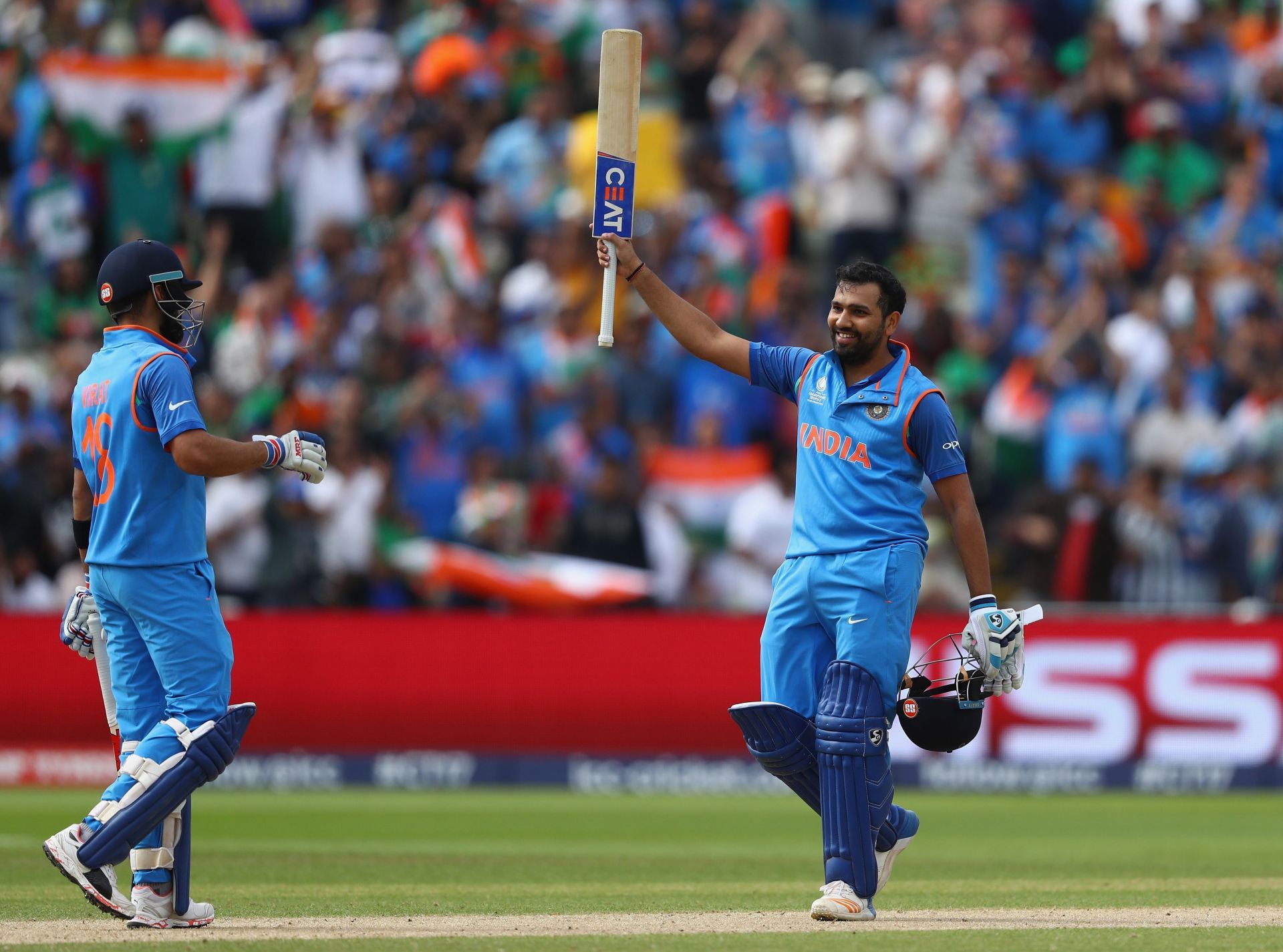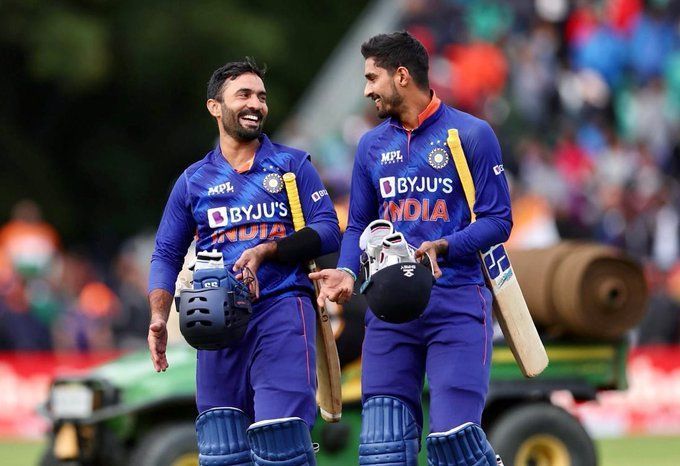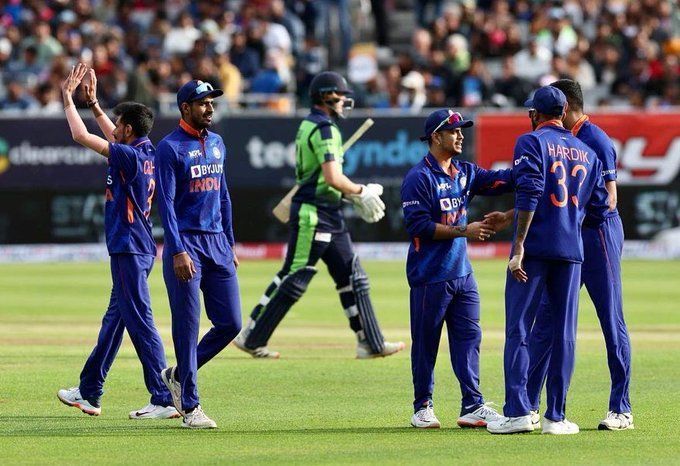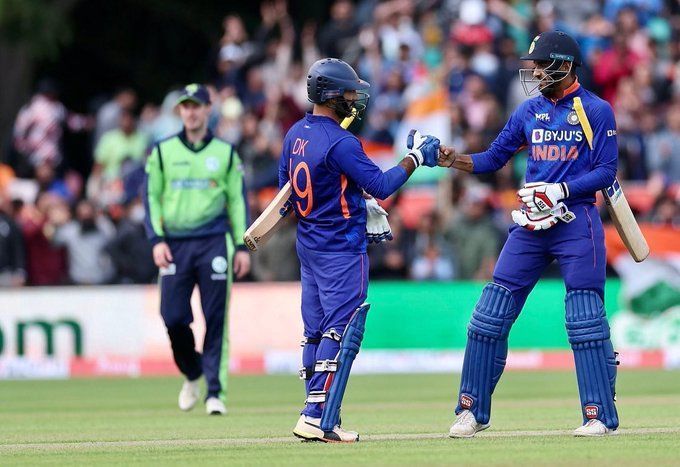
3 reasons why India’s top 3 don’t fit with the team's T20 template
T20 is a game that has evolved more than cricket has ever conceived. From being the baby, the lighter version of the mega moth to cutting out a niche for itself, T20 has come a long way. Now, it seems to take the most out of the players and demands to always be aggressive and still be strategic about it.
There is a method to the madness, and it is evolving by the day. India did their bit to stay well ahead of the curve with the Indian Premier League (IPL). Some would argue it yielded results with their maiden T20 World Cup win in 2007. But It hasn’t gone exactly to plan since then. Teams have gained from competing with the best players in the IPL and have evolved better for the international stage.
India, on the other hand, still stuck to its roots and bore the brunt of it in the last T20 World Cup. They decided to scrap it all out and start over under a new regime. As a viewer, you cannot complain about watching young guns go out and play fearless cricket across the globe in almost every bilateral series they play.
With the big stages returning, the old guards were called in. They confer the team with the stability and experience needed to wade through the big games. But it comes at a cost of natural flair boiling down, and that is something the Indian team should be wary of.
On that note, here are three reasons why the current Indian top order doesn’t work with their new T20 template:
#1 The strike rate conundrum
Strike rate is the new 'Voldemort' in the Indian setup. Everyone knows its relevance and somehow, we hear every Indian batter loathe talking about it. But it is one of the most crucial aspects of the modern game.
In the trio of Virat Kohli, Rohit Sharma and Rahul, somehow it's only the skipper who seems to have his foot on the accelerator. Kohli and Rahul seem to stress on quantity rather than quality, both for varied reasons.
Thus, barring a blitzkrieg from the middle order (or hoping Suryakumar Yadav continues to reach the skies), it leaves India short of a commanding score. Add that to the shifting gears strategy failing (50 conversion stands at nine in 27 and 32 innings for Rahul and Rohit, respectively, since 2020 in T20s and six in 20 for Kohli - less than 30 percent), it really leaves the team in bad taste.
Hence, if the old habits continue, this Indian side could again find itself climbing a steep mountain.
#2 Intent vs Technique
Dwelling further into why intent comes from confidence in your abilities, there isn’t a shadow of doubt about the ability of India’s top three. But there are certain chinks in the armor that these superstars have developed. Both Kohli and Rohit aren’t the biggest fans of leg spin. One of them has issues accelerating and the other keeps losing his wicket. Kohli’s strike rate of 100 in IPL 2021 and Rohit's score of 130 runs in the past 17 innings at a rate of 120, losing his wicket six times, vindicates that point.
On the other hand, the issue seems more mental with Rahul. Somehow, he seems so convinced about anchoring that he completely eschews away from his natural ball-hitting capabilities. With Punjab Kings before (his strike rate rate was in the 120 range in the final season for Punjab) and Lucknow Super Giants this season, his approach was reasoned as a lack of middle-order depth and hence the added responsibility. But with the firepower India possesses, Rahul should least be reasoned, if not demanded, to go out and bat his natural game.
#3 Sacrificing a lamb
With Rohit, Rahul, and Kohli at the top, India seem to have two anchors in their top three, albeit one of the best in world cricket, but anchors, nevertheless. This means one out of Rishabh Pant and Dinesh Karthik would have to miss out considering Suryakumar and Hardik Pandya walk into the XI, India plays four bowlers and one all-rounder in Ravindra Jadeja/Axar Patel/Ravichandran Ashwin. The only way of slotting in both your only left-hander and your assigned finisher into the team is if you give Hardik the designated 5th bowler role, a punt that could be a risk too soon, given Hardik’s fitness issues.
Barring this, it takes a lot to see Deepak Hooda in his eyes and tell him he is not playing. He has done everything to slam the door down and walk into the playing XI. He is also someone who gives you a bowling option in the top order. The dynamic allrounder has a BASRA (batting average and strike rate aggregate) of 196 this year, averaging 41 and striking at 155. So, a discussion has to be made about how long the rope should extend to the current top three if they keep batting in their usual mold.
Thus, the jury might be out, and the quality is unabated. But a change of method should be implored as a necessity. Even if the change in personnel is too hasty, a change in approach that coalesces with India’s newfound T20 template could freshen up the chances for The Men in Blues in the upcoming World Cup.



